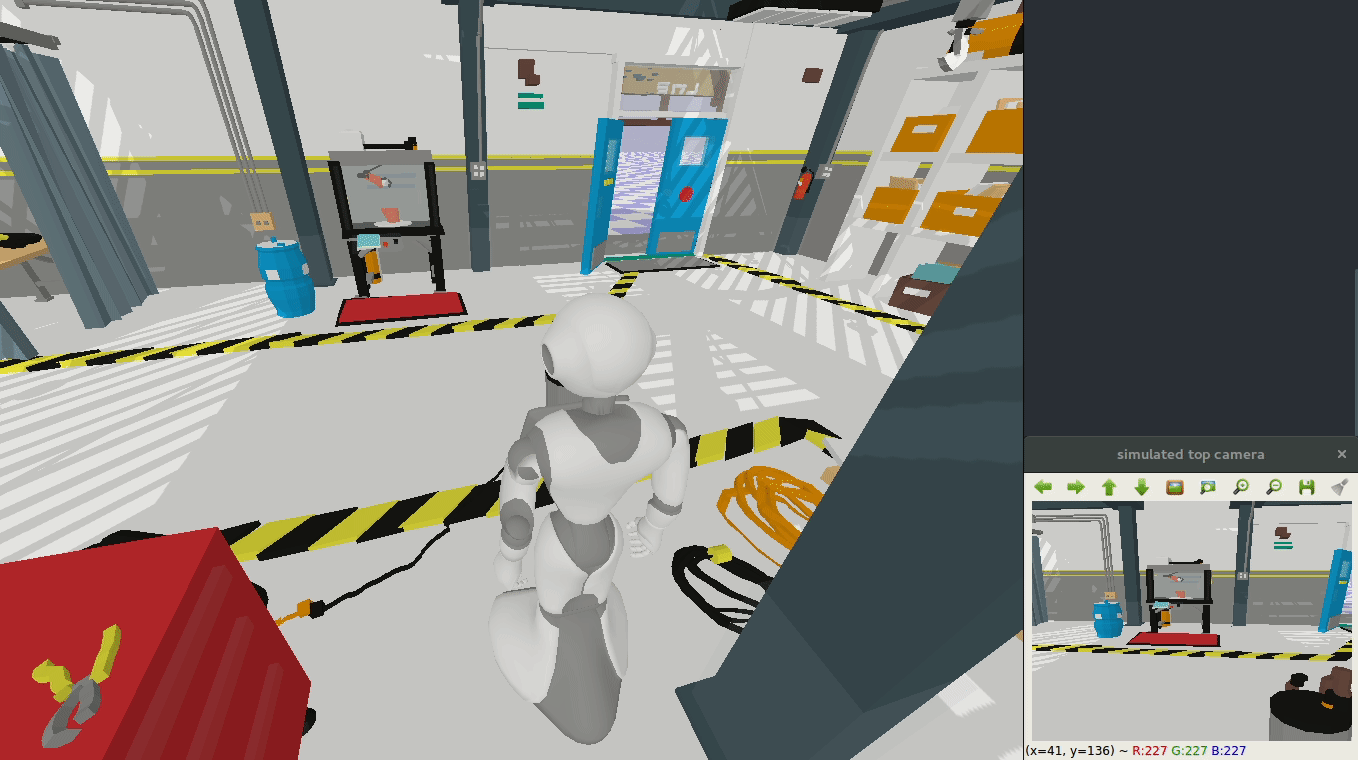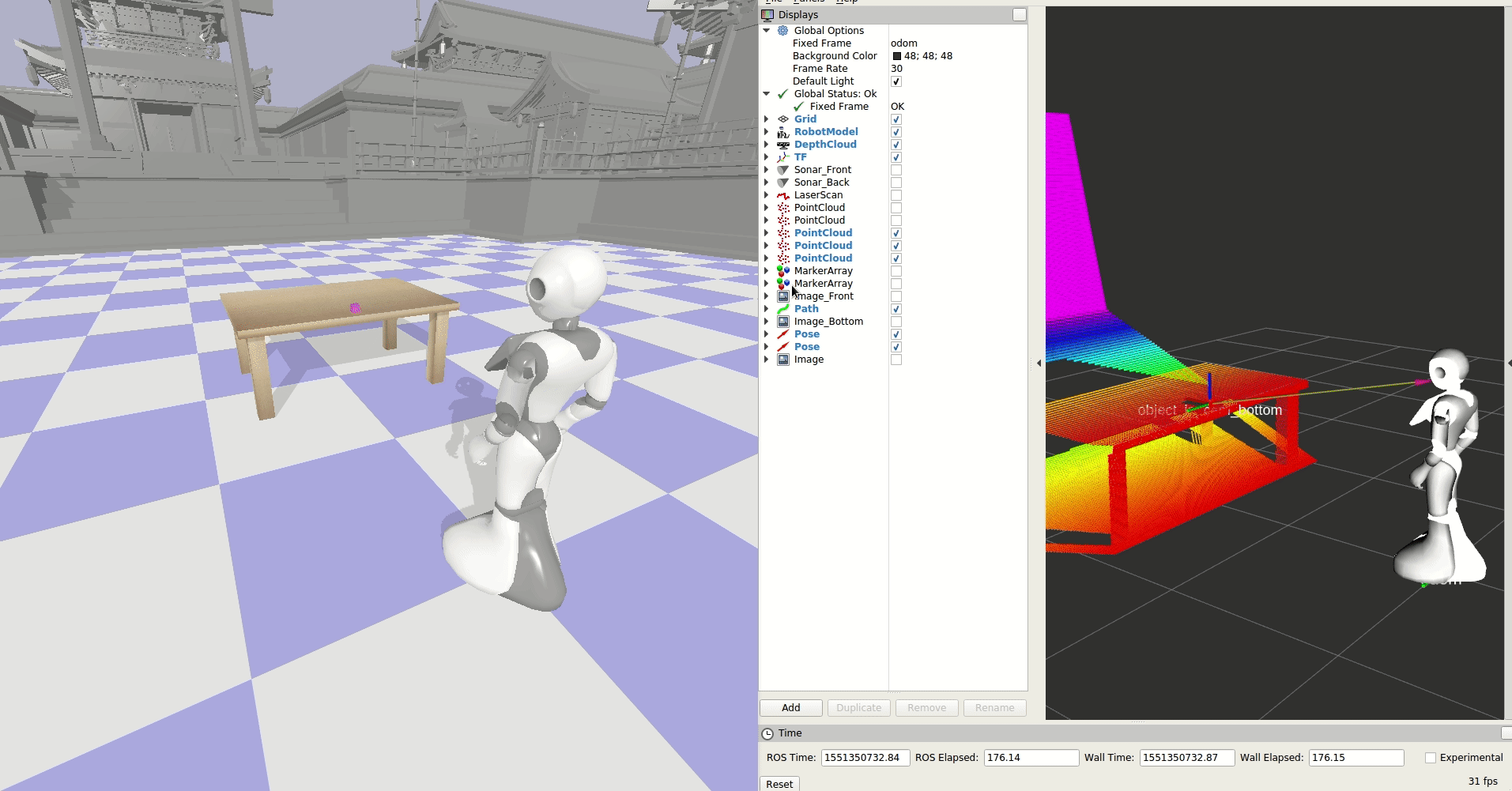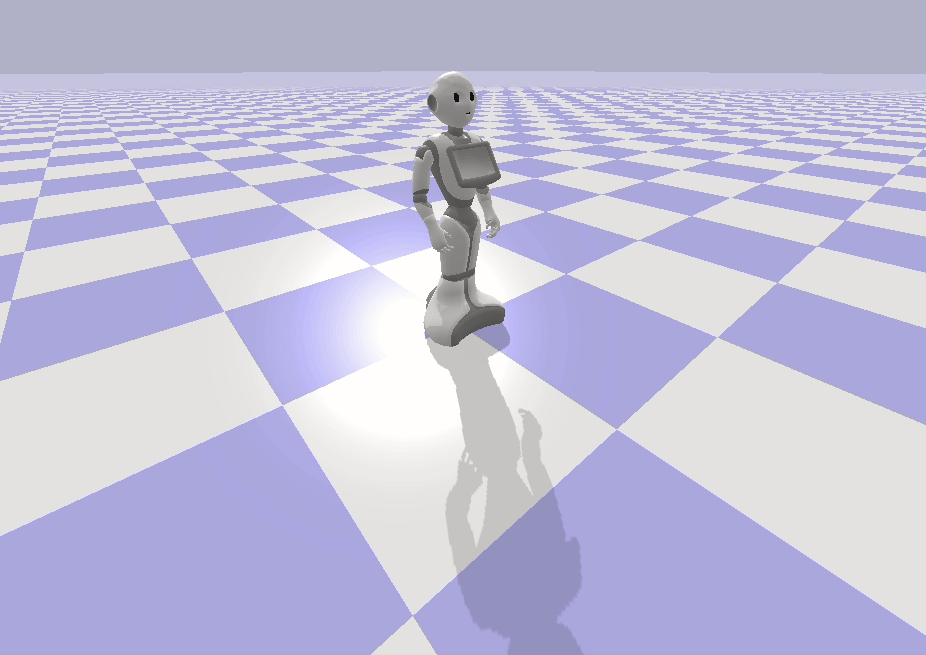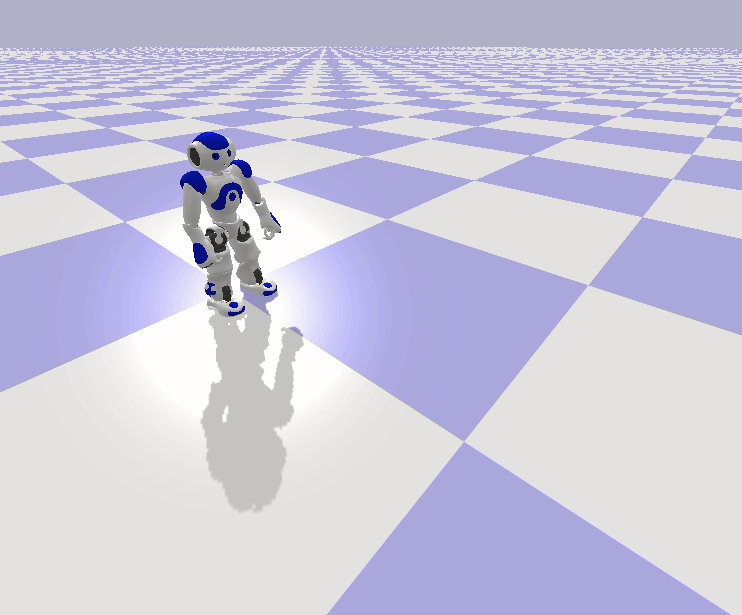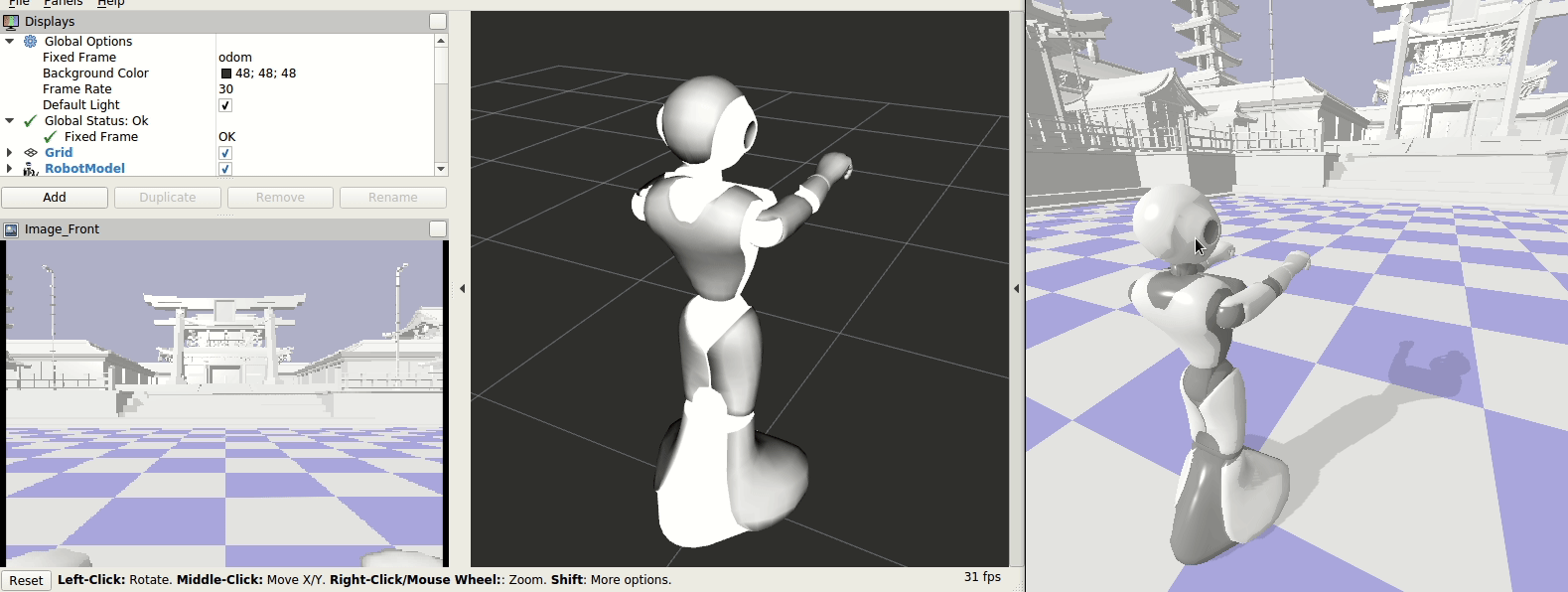Bullet-based python simulation for SoftBank Robotics' robots.
The following modules are required:
- numpy
- pybullet
The qiBullet module can be installed via pip, for python 2.7 and python 3:
pip install --user qibulletAdditional resources (robot meshes and URDFs) are required in order to be able to spawn a Pepper, NAO or Romeo robot in the simulation. These extra resources will be installed in your home folder:
/home/username/.qibulleton Linux and macOSC:\Users\username\.qibulleton Windows
The installation of the additional resources will automatically be triggered if you try to spawn a Pepper, NAO or Romeo for the first time. If qiBullet finds the additional resources in your local folder, the installation won't be triggered. The robot meshes are under a specific license, you will need to agree to that license in order to install them. More details on the installation process can be found on the wiki.
A robot can be spawned via the SimulationManager class:
import sys
from qibullet import SimulationManager
if __name__ == "__main__":
simulation_manager = SimulationManager()
# Launch a simulation instances, with using a graphical interface.
# Please note that only one graphical interface can be launched at a time
client_id = simulation_manager.launchSimulation(gui=True)
# Selection of the robot type to spawn (True : Pepper, False : NAO)
pepper_robot = True
if pepper_robot:
# Spawning a virtual Pepper robot, at the origin of the WORLD frame, and a
# ground plane
pepper = simulation_manager.spawnPepper(
client_id,
translation=[0, 0, 0],
quaternion=[0, 0, 0, 1],
spawn_ground_plane=True)
else:
# Or a NAO robot, at a default position
nao = simulation_manager.spawnNao(
client_id,
spawn_ground_plane=True)
# This snippet is a blocking call, just to keep the simulation opened
if sys.version_info[0] >= 3:
input("Press a key to end the simulation")
else:
raw_input("Press a key to end the simulation")
# Stop the simulation
simulation_manager.stopSimulation(client_id)
Or using loadRobot from the PepperVirtual class if you already have a simulated environment:
pepper = PepperVirtual()
pepper.loadRobot(
translation=[0, 0, 0],
quaternion=[0, 0, 0, 1],
physicsClientId=client_id)More snippets can be found in the examples folder, or on the wiki
⚠️ The camera subscription system of qiBullet 1.4.0 (and lesser) is deprecated, use the new system
The qiBullet API documentation can be found here. In order to build the documentation, the doxygen package has to be installed beforehand and the docs folder has to exist. The submodules should also be checked out:
git submodule init
git submodule updateThe documentation can then be generated via the following command:
cd docs
doxygen DoxyfileThe repository also contains a wiki, providing some tutorials.
Please cite qiBullet if you use this repository in your publications:
@article{busy2019qibullet,
title={qiBullet, a Bullet-based simulator for the Pepper and NAO robots},
author={Busy, Maxime and Caniot, Maxime},
journal={arXiv preprint arXiv:1909.00779},
year={2019}
}
If you encounter the message:
Workaround for some crash in the Intel OpenGL driver on Linux/Ubuntu
Your computer is using the Intel OpenGL driver. Go to Software & Updates, Additional Drivers, and select a driver corresponding to your GPU.
Licensed under the Apache-2.0 License



